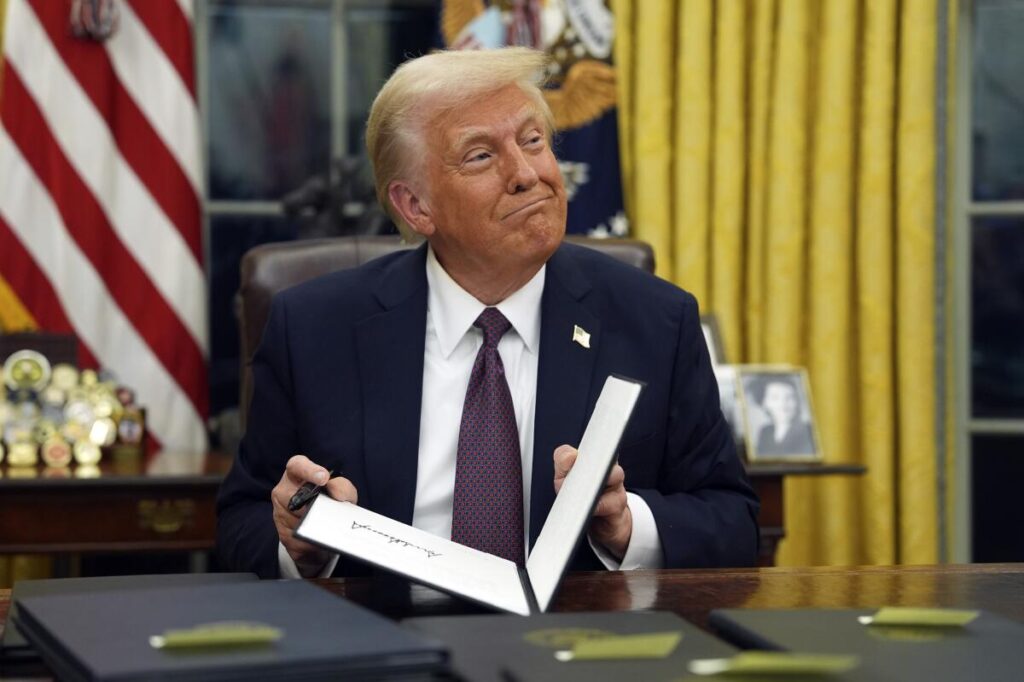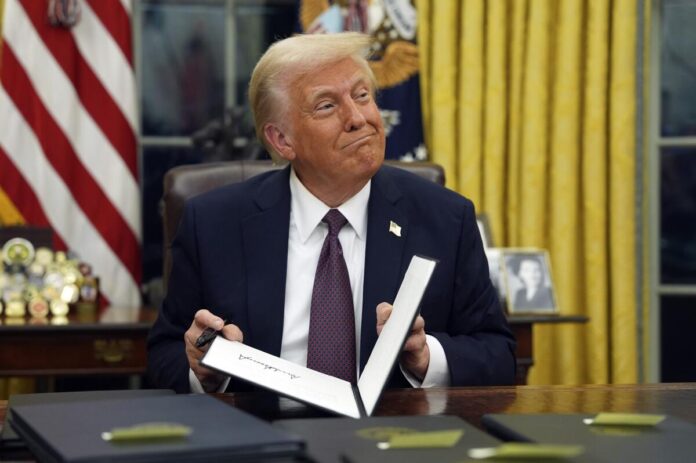
In a major trade policy move, former US President Donald Trump announced new tariffs on China, Mexico, and Canada but left India out of the list. The tariffs, effective from February 1, impose a 25% duty on imports from Mexico and Canada and a 10% duty on Chinese goods, citing concerns over the US trade deficit.
According to The Indian Express, China remains the largest contributor to the US trade deficit at 30.2%, followed by Mexico (19%) and Canada (14%). In contrast, India accounts for only 3.2% of the deficit, ranking ninth overall, as per data from the Research and Information System (RIS).
“We have big deficits with all three of them. And in one case, they’re sending massive amounts of fentanyl, killing hundreds of thousands of people a year. And in the other two cases, they’re making it possible for this poison to get in. We have about a $200 billion deficit with Canada and a $250 billion trade deficit with Mexico,” Trump stated during a press briefing.
India’s Tariff Policy and Global Trade Position
India’s import tariff policy has evolved over time to balance domestic economic priorities with global trade integration, as highlighted in the Economic Survey released on Friday. The survey noted that tariff rates vary by sector, ensuring protection for sensitive industries while allowing access to crucial raw materials and intermediate goods. India also ensures that its tariff structures align with the World Trade Organization (WTO) regulations.
Meanwhile, a report by the Peterson Institute for International Economics warned that a 10% tariff on China, coupled with potential Chinese retaliatory measures, could reduce US GDP by $55 billion over four years and cause China to suffer a $128 billion loss. Inflation in the US would rise by 20 basis points, while China would initially see a decline followed by a 30-basis-point increase due to monetary policy tightening.
In December, BVR Subrahmanyam, CEO of NITI Aayog, suggested that Trump’s trade policies could create economic opportunities for India, particularly by diverting global trade in India’s favor.
The exclusion of India from the US tariff list may indicate a strategic shift in trade relations, positioning India as a potential beneficiary in the evolving global trade landscape.
Sources By Agencies



